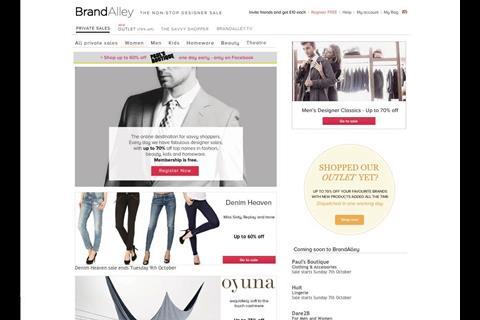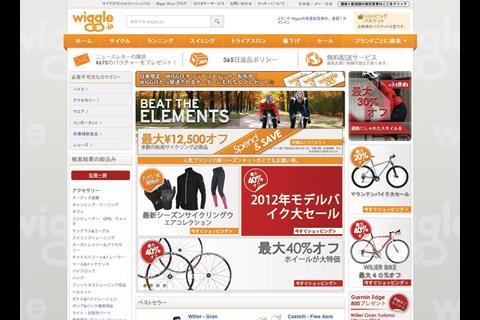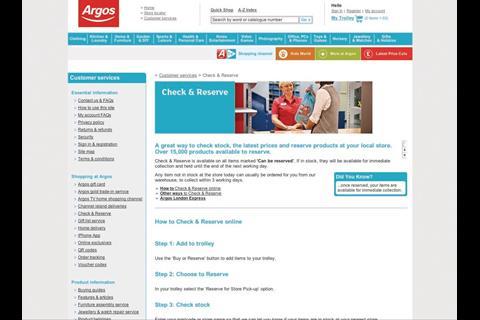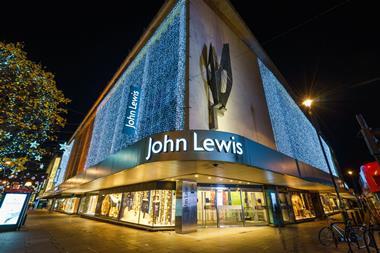Standing still is not an option for retailers with online ambitions, as the pace of digital development offers increasingly lucrative opportunities.
The UK isn’t just a nation of online shoppers. It’s home to the most active and highest spending online consumers in the developed world.
That’s according to research released in February 2012 by the Organisation for Economic Co-operation and Development (OECD). It found that six out of 10 British adults now use the internet to make purchases – twice the average recorded across all 34 OECD member states, which include the US, Germany, Australia and France.
Meanwhile, the Interactive Media in Retail Group (IMRG), the UK’s online retail industry association, estimates that British customers spent £68.2bn online in 2011 – equivalent to £2,180 per adult in the country. By contrast, online spending in Denmark, the OECD country with the second highest proportion of online shoppers, averaged just £1,000 per adult last year.
For online retailers, then, the challenge isn’t to persuade UK customers to make purchases online. The real test lies in creating a buying experience that captures a larger slice of each customer’s spend and, increasingly, attracts an international audience.
But as the 2012 Etail Power List shows, every online retailer faces ferocious competition in the battle to meet (or better still, exceed) the expectations of today’s sophisticated and demanding online shoppers.
“Customers want more, they’ll always want more and that’s what we have to keep sight of,” says Robin Terrell, executive director of multichannel and international at House of Fraser. “It’s very easy for those working in this space to get distracted by the big, shiny, new projects – but in fact, there’s a huge amount of work that goes into simply moving an online business forward on an ongoing basis. You can’t stand still, you simply can’t afford to.”
Those that do stand still, he argues, will find themselves falling behind quickly thanks to the unforgiving pace of change in online retail – not just in customer tastes and demand, but in the technologies available to create that compelling experience for them.
At House of Fraser, Terrell’s mission, as he sees it, is to make sure that “every element of our online proposition is substantially better than it was a year ago, in terms of assortment, in-stock availability, product information, video and editorial content, delivery options – everything, in fact”.
That’s a tall order. Earlier this year, Martin Gill, an analyst at market research company Forrester Research, summed up a present-day retailer’s dilemma this way: “Amid a sea of other distractions, e-business executives must learn to experiment and innovate in order to identify genuinely valuable new technologies and services, while enhancing their core capabilities.”
Going mobile
In terms of creating value for customers and retailers alike, mobile commerce has stood out as the ‘must-have’ offering of 2012. Customers want to shop from their mobile devices and retailers want to exploit the revenue opportunity that mobile commerce represents. A study published in February by the Centre for Retail Research and Kelkoo predicted that UK-based users will spend £4.5bn shopping from their mobile handsets this year, up 53% from 2011.
Across Europe as a whole, it forecast that m-commerce will make up 6.1% of all 2012 online sales (up from 4.3% in 2011 and 1.4% in 2010), but looking at the UK alone, the figure is likely to be 8%.
Many UK retailers, however, hope that the share of sales coming from mobile devices will make up an even greater proportion, perhaps into double-digit percentages, of their online revenues. At some, it already does.
Take private sales etailer BrandAlley. When it launched its mobile site in February 2012, the company’s marketing and PR director, Melissa Littler, said: “We plan 10% of our revenue next year will come via mobile and will be critical to our growth.”
However, in late September this year, BrandAlley chief executive Rob Feldmann revealed that about 15% of revenues already comes from mobile devices and that he’s hoping that figure will hit 20% by the end of this year.
The patterns that BrandAlley is experiencing in mobile traffic suggest that mobile commerce has opened up hours of the day for its customers to shop. There’s a significant spike in traffic, says Feldmann, during customers’ morning commutes to work and then later on in the evening, from 8pm onwards. The evening visitors are slightly older customers, often using iPads, but they’re spending longer on average on the site and assembling baskets with an average value of £90, which is £10 higher than the average value at other times of the day.
At grocery retailer Waitrose, mobile commerce has been a big focus for 2012 and will continue to be so in 2013. In part, that’s down to the late arrival to m-commerce, acknowledges Waitrose’s ecommerce director Robin Phillips. The grocer’s first transactional mobile website didn’t go live until June this year and, as yet, “we haven’t told many people about it”, he says.
His team’s focus since then has been on ensuring the site works well, rather than creating a blaze of publicity, but the retailer intends to make more noise about its new capability in the closing months of the year.
“It’s fair to say that, this year, Waitrose has been catching up in mobile commerce. But now that’s done, next year will be all about moving forwards pretty quickly and getting ahead,” he says. “We’re very excited about what we see as a huge opportunity.”
Fashion retailer Reiss, meanwhile, has been experimenting with mobile commerce for some years, says Reiss ecommerce director Dan Lumb, and it now accounts for 35% of visits and 40% of online sales. With that aspect of the business already ticking over nicely, site content has been more of a priority throughout 2012.
Content is king
In particular, with this summer’s relaunch of the company’s online store (and a change of address from Reissonline.com to the simpler Reiss.com), the retailer has introduced a large range of editorial content to the site including blogs, fashion features, collaborations with guest stylists and news on which celebrities have been spotted wearing Reiss clothing.
This content is designed to increase customer dwell time on the site, boost conversion rates and encourage repeat business – but it works on a deeper level, too, Lumb says. “We’ve got a team of professional copywriters working to update the site every week of the year, telling the ‘Reiss story’ in sophisticated and engaging ways,” he says.
“It’s about reaching out to the customers and taking them on a journey. It’s about us communicating with them in a really human way.”
Like other leading ecommerce directors, Lumb doesn’t see the online retail operation that he heads as standing apart from the rest of the business. “The management team sees Reiss as a brand, first and foremost, and I’m one of the directors looking after that brand,” he says.
It’s that kind of thinking that is driving multichannel retailing at Reiss and at many other companies. At House of Fraser, for example, Terrell claims to offer the fastest click-and-collect service available, whereby orders placed online by 7pm (recently pushed back from its earlier 5pm cut-off point) can be picked up in store from as early as 12pm the following day.
Blurring the lines
This focus on blurring the lines between a retailer’s online and offline operations are in line with predictions made in February 2012 by Gill that “multichannel will sweep Europe this year”.
Four out of 10 Europeans, he argued, are now multichannel buyers, but the UK has led the way for some time in serving these customers. While Argos, for example, has offered its Check & Reserve service for a decade, this year’s newcomers include Topshop, HMV and Waitrose. Both Asos and John Lewis, meanwhile, have plans to use networks of independent convenience stores in order to bring pick-up points even closer to their customers.
However, many retailers are angling to deliver products to customers located further away than ever before. Increasing global reach has been a big 2012 priority for ecommerce director Steve Mills and his team at online cycling and triathlon specialist Wiggle. Since the launch this September of a dedicated dotcom site for the US market and one for Australia, Wiggle now has dedicated sites for 11 countries, including Japan, China, Russia and five European nations, as well as the UK.
Similarly, at Aurora Fashions, group omnichannel director Ishan Patel is preparing to launch sites for Spain and France in the next month and at Reiss, Lumb and his team launched an Australian site in August. Lumb says: “Like many UK-based retailers, we know that while the growth we can expect in the UK will be pretty healthy, there’s a huge amount of pent-up demand elsewhere in the world, so our biggest source of growth will be these international operations.”
It’s that ability to keep an eye open for the next big opportunity and get to work monetising it as quickly as possible that sets leading online retailers apart from the rest of the field. “Sometimes, it’s not about what your nearest competitors are doing but about which companies are setting the benchmarks in online retail, whatever they’re selling,” says Patel.
Complacency has no place in this world and continual incremental improvements are a way of life. Or, as Terrell says he tells his staff: “If it ain’t broke, you’re not looking hard enough.”
FOUR ONLINE RETAIL SUCCESS STORIES
John Lewis
In the first half of 2012, Johnlewis.com sales rose by 43% to £375.8m, which was 24% of John Lewis’s total revenues.
Argos
In the second quarter of 2012, sales via Argos’s Check & Reserve service climbed 24% to represent 30% of the £867m quarterly total. Internet sales increased 16% to make up 42% of total sales.
House of Fraser
More than two-thirds of the retailer’s online orders are collected in store, and about one in four customers collecting in store makes additional purchases.
Asos
Of the 1 million visitors a day that Asos received in March 2012, 16% came from mobile devices and 69% from outside the UK.
In numbers
80% - UK shoppers that have reserved products online for collection in stores (up from 74% in 2011)
44% - UK shoppers that always research purchases on the internet before buying offline
43% - UK shoppers that use smartphones while on the move to compare prices and read product reviews (up from 19% in 2011)
4% - UK shoppers that never use the internet for product research
































No comments yet